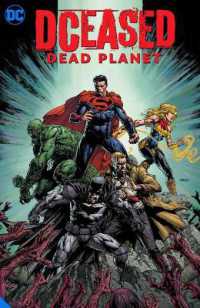Full Description
The #1 Guide to Excellence in Technical Communication—Fully Updated for Embedded Assistance, Mobile, Search, Multimedia, and More
Direct from IBM's own content design experts, this guide shows you how to design product interfaces and technical information that always place users front and center. This edition has been fully revised to help you consistently deliver the right content at the right time.
You'll master today's best practices to apply nine essential characteristics of high-quality technical information: accuracy, clarity, completeness, concreteness, organization, retrievability, style, task orientation, and visual effectiveness.
Coverage Includes
Advocating for users throughout the entire product development process
Delivering information in an ordered manner by following progressive disclosure techniques
Optimizing content so that users can find it from anywhere
Streamlining information for mobile delivery
Helping users right where they are
Whether you're a writer, editor, information architect, user experience professional, or reviewer, this book shows you how to create great technical information, from the product design to the user interface, topics, and other media.
Thoroughly revised and updated
Extensive new coverage of self-documenting interfaces and embedded assistance
Updated practical guidelines and checklists
Hundreds of new examples
Contents
Preface
Acknowledgments
About the authors
Part 1. Introduction
Chapter 1. Technical information continues to evolve
Embedded assistance
Progressive disclosure of information
The technical writer's role today
Redefining quality technical information
Chapter 2. Developing quality technical information
Preparing to write: understanding users, goals, and product tasks
Writing and rewriting
Reviewing, testing, and evaluating technical information
Part 2. Easy to use
Chapter 3. Task orientation
Write for the intended audience
Present information from the users' point of view
Focus on users' goals
Identify tasks that support users' goals
Write user-oriented task topics, not function-oriented task topics
Avoid an unnecessary focus on product features
Indicate a practical reason for information
Provide clear, step-by-step instructions
Make each step a clear action for users to take
Group steps for usability
Clearly identify steps that are optional or conditional
Task orientation checklist
Chapter 4. Accuracy
Research before you write
Verify information that you write
Maintain information currency
Keep up with technical changes
Avoid writing information that will become outdated
Maintain consistency in all information about a subject
Reuse information when possible







